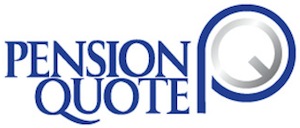In times of economic uncertainty, protecting wealth becomes a paramount concern for high-net-worth individuals and business owners. Qualified retirement plans offer not only significant tax advantages but also robust asset protection features that can be strategically leveraged during market volatility. This comprehensive guide explores how these plans can serve as both tax-efficient retirement vehicles and wealth preservation tools.
Understanding the Asset Protection Foundation of Qualified Plans
The asset protection benefits of qualified retirement plans stem primarily from the Employee Retirement Income Security Act of 1974 (ERISA). ERISA-governed plans provide superior protection against creditors compared to most other investment vehicles. This federal protection supersedes state laws and creates a formidable barrier against potential claims.
During economic volatility, this protection becomes especially valuable as business liabilities may increase and investment losses in other areas may trigger creditor concerns. The statutory protection means retirement assets remain untouched even if a business faces financial distress or bankruptcy.
Maximizing Contributions During Market Downturns
Economic volatility often creates temporary market downturns that present strategic opportunities for qualified plan participants. Consider implementing dollar-cost averaging on steroids by accelerating contributions during market corrections to acquire assets at discounted valuations. This strategy is particularly effective within defined benefit plans where contribution limits are significantly higher than 401(k) plans. Rather than selling existing investments and potentially realizing losses, use new contributions to rebalance your portfolio within the protected environment of the qualified plan. Coordinate qualified plan contributions with tax-loss harvesting strategies in taxable accounts to optimize your overall tax situation during volatile markets.
Defined Benefit Plans: The Ultimate Volatility Shield
Defined benefit plans deserve special attention during economic uncertainty. These plans allow for substantially higher contributions—potentially exceeding $300,000 annually for older business owners—compared to defined contribution plans. This creates a powerful wealth protection mechanism through accelerated deductions. During profitable years, even amidst broader economic volatility, substantial plan contributions generate immediate tax deductions, effectively transferring wealth into a protected environment. After market downturns, actuarial assumptions can sometimes be adjusted to allow for additional “catch-up” funding, creating an opportunity to contribute more funds to an asset-protected environment. The combination of high contribution limits and absolute creditor protection creates an unparalleled wealth preservation strategy, allowing business owners to protect significant assets during uncertain times.
Cash Balance Plans: Precision Protection for Professional Practices
Cash balance plans have emerged as favored solutions for professional practices seeking both tax efficiency and asset protection. During economic volatility, these plans offer distinct advantages. Unlike traditional defined benefit plans, cash balance plans provide account balances that participants can easily track, offering psychological comfort during market turbulence. Cash balance plans can be designed with variable contribution formulas that adjust to business performance, providing crucial flexibility during uncertain economic periods. By combining a cash balance plan with a 401(k) profit-sharing plan, business owners can maximize both tax deductions and asset protection while maintaining different contribution levels for various employee groups.
Strategic Plan Design for Maximum Protection
The specific design elements of qualified plans can significantly enhance their asset protection value during volatile economic periods. Implementing both defined contribution and defined benefit plans simultaneously can maximize protected assets while providing diversification in contribution strategies. Cross-testing methodologies allow plans to provide varying benefits to different employee classifications while maintaining compliance with non-discrimination requirements—particularly valuable for businesses with fluctuating revenues. Strategic timing of plan amendments can optimize protection in response to changing economic conditions, allowing business owners to adapt their retirement structures to the prevailing environment.
Avoiding Common Asset Protection Pitfalls
Even well-designed qualified plans can have vulnerabilities if not properly managed. Economic pressure may tempt plan sponsors to engage in prohibited transactions, such as loans to related parties or investments in closely-held business interests. These actions can jeopardize the plan’s qualified status and its asset protection features. For participants subject to RMDs, proper planning is essential to maintain asset protection while satisfying distribution requirements. Economic volatility often triggers increased scrutiny of fiduciary decisions. Maintaining meticulous documentation of investment decisions becomes critical during these periods.
Coordination with Other Asset Protection Strategies
For maximum effectiveness, qualified plan strategies should be coordinated with broader asset protection planning. Proper liability insurance coverage complements the protection offered by qualified plans, creating multiple layers of defense. Ensuring business entity structures (LLCs, corporations, etc.) align with qualified plan design maximizes overall protection. For distributed plan assets, properly structured trusts can maintain protection while accommodating estate planning objectives.
Case Study: Weathering Economic Storms
Consider Dr. Roberts, a successful specialist physician who implemented a combination cash balance and 401(k) profit-sharing plan three years before a major economic downturn. During the volatile period, she maintained maximum contributions to both plans despite reduced practice revenue, effectively transferring wealth to protected environments during uncertainty. When a malpractice claim coincided with the economic downturn, her retirement assets remained fully protected while non-retirement investments suffered both market losses and were subject to potential claims. The substantial tax deductions generated by plan contributions helped offset the reduced income, providing tax relief during financial strain. As markets recovered, her protected assets grew substantially within the creditor-proof environment, significantly outperforming her exposed assets.
Implementation Timeline for Volatile Markets
For those considering enhanced retirement plan asset protection during economic uncertainty, a strategic implementation timeline might include immediate assessment of current plan protection status, identification of protection vulnerabilities, and consultation with specialized pension advisors. Near-term steps would involve designing optimized plan structures, developing funding strategies aligned with business cash flow, and preparing required plan documentation. Medium-term implementation includes executing plan amendments or new plan establishment, implementing investment strategies appropriate for the economic environment, and conducting employee education about plan changes.
Conclusion
Economic volatility, while challenging, creates unique opportunities to leverage qualified retirement plans as powerful asset protection tools. By understanding the full range of protection features these plans offer and implementing strategies tailored to current market conditions, high-net-worth individuals and business owners can simultaneously shield assets from creditors, reduce tax liabilities, and position themselves advantageously for eventual market recovery.
The intersection of retirement planning, tax strategy, and asset protection represents one of the few remaining legitimate “safe harbors” for wealth in uncertain times. By working with knowledgeable advisors who understand these complex intersections, clients can transform economic challenges into long-term financial advantages within the protective framework of qualified retirement plans.
This article is provided for informational purposes only and does not constitute legal or tax advice. Individuals should consult with qualified legal and tax professionals regarding their specific circumstances.
For high-net-worth business owners, strategic tax planning through qualified retirement plans offers powerful opportunities to reduce tax liability while building wealth for retirement. This guide explores key IRS-approved strategies that combine significant tax benefits with retirement security. Contact PensionQuote and we’ll design a tax strategy that makes a substantial impact in lowering your tax burden.

